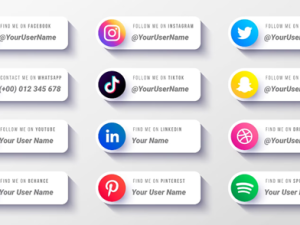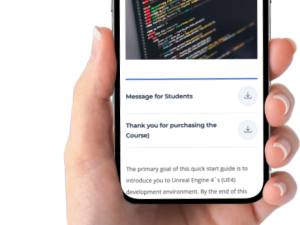Basic ICT competencies
- Description
- Curriculum

Introduction
Students with disabilities may face a range of difficulties when pursuing higher education at university. Some of the challenges they may encounter include physical barriers, attitudinal barriers, financial barriers, mental health issues, lack of support, stigma and discrimination. On top of all these are several academic challenges depending on the disability of the student, that constraint them from certain academic tasks, such as reading, writing, or taking tests. Most of the times these challenges are repellent in allowing students to complete their studies. It’s important for universities to work to address these challenges and provide support to ensure that all students have equal opportunities to succeed.
There is, however a variety of approaches and technologies used to assist students with disabilities, depending on their specific needs. These approaches are facilitated by a whole set of ICT (Information and Communication Technology) tools (physical and digital) that play a significant role in supporting students with disabilities in their education.
Students with disabilities have unique needs but also opportunities in their academic life. On the one hand every SwD should have an accessible infrastructure where buildings, accomondation infrustructures and facilities are fully accessible to students with disabilities, including access to extracurricular activities. This includes ramps, elevators, and other accommodations that make it easier for students to navigate the campus. On the other hand, digital accesibility makes use of technological advancments to support inclusive curriculum. Assistive technology can assit studies, including screen readers, text-to-speech software, and other tools that make it easier to access and interact with digital materials. Adiitonal counseling and support services and employment opportunities can help SwD access employment opportunities gain valuable experience and prepare for their future careers. Benefits of assistive technology for students with disabilities, including improved academic performance, increased participation in class, and greater independence[1]. The impact of assistive technology on the academic performance of university students with disabilities, finding that it can significantly improve their grades and overall academic performance.[2]
The Learning Objectives covered by the Module
| In completing this Module, the learner will be able to:
● Enhance their digital literacy: Teaching basic ICT tools to students with disabilities can help them become more digitally literate and comfortable with using digital technologies. This can help them access information, communicate with others, and participate in the digital world more effectively. ● Improve their academic performance: Learning basic ICT tools can help students with disabilities improve their academic performance by providing them with tools that can help them study more efficiently, access information more easily, and communicate with teachers and peers more effectively. ● Foster their independence: By teaching basic ICT tools to students with disabilities, educators can help them become more independent learners and individuals. ● Increase their employability: As technology continues to play an important role in many industries, having basic ICT skills can be an important factor in employability. ● Promote their social inclusion: ICT tools can help students with disabilities to connect with others, participate in social activities, and communicate more effectively. |
Units within the Module :
| Module 1 is divided in 3 main units:
● Existing ICT Tools assisitng People with Dissabilities ● Existing ICT Tools in the academy ● Learning how to use ICT tools for an easier and more effective learning process
|
[1] “Assistive technology in the classroom: enhancing the school experiences of students with disabilities” (Beukelman & Mirenda, 2005)
[2] “Impact of assistive technology on the academic performance of university students with disabilities: an exploratory study” (Alkahtani et al., 2020)
-
1Existing ICT Tools assisting People with Disabilities
Unit #1 is expected to lay the fundamental basis of exisitng tools and tehcnologies used so far that can help SwD to continue semalesly their studies and Improve their academic performance.
In completing this unit, the learner will be able to:
· Identify and select appropriate tools to support the learning process
· Associate ICT tools and skills with different disabilities
-
2ICT and digital tools for PwD
-
3Existing ICT Tools in the academy
Unit #2 is expected to provide information in greater detail of the tools and practices used in the academy and have a more educaional purpose. There are some tools that have been sepcially developed for educational purpose and these tolls along with their features and functionalities will be described within this Unit.
In completing this unit, the learner will be able to:
· Learn how to support higher educational studies using suggested ICT tools and supportive technologies
-
4Assessment 1, Activity Unit #2
-
5Learning how to use ict tools for an easier and more effective learning process
Unit #3 is expected to show how to better user ICT tools towards asssiting students to exprienece an effective learning process without beiong contrained by any dissabilities. Tips, steps and Dos & Don’ts are provided so as to employ the assitive tools adn technologies in an easy and effective way for a better leatning experience.
In completing this unit, the learner will be able to:
· Learn which steps tp follow for employing the right tool for a given dissability
Learn what mistakes to avoid so as to ensure that the use of ICT tools is effective and beneficial.
-
6Assessment 1, Activity Unit #3











